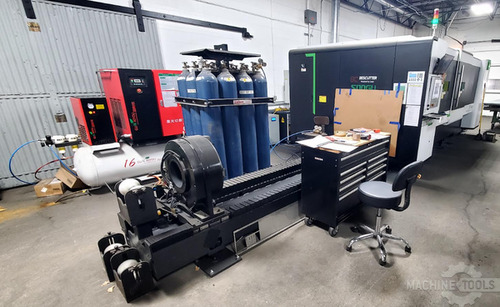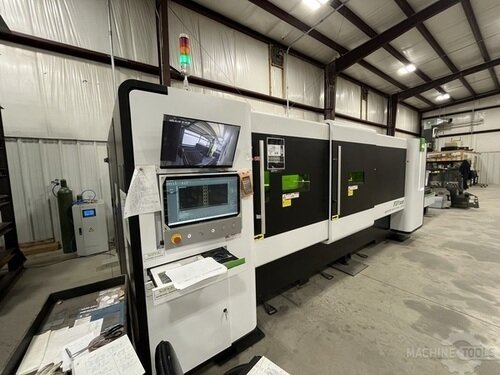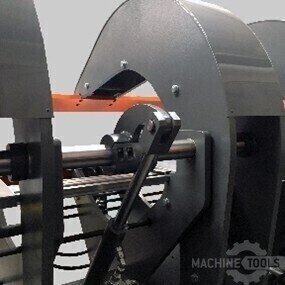From my earliest days working the shop floors of southern Chicago, I learned that real partnerships start with listening—and that the best solutions are those tailored to the unique needs of each operation. At Mac-Tech, I’ve carried that belief into every customer relationship, whether I’m consulting with a small roofing outfit or a high-volume metal fabricator. My focus is always on helping you navigate the evolving world of sheet metal machinery, from folders and slitters to roll formers and panel benders, so you can achieve lasting gains in efficiency, quality, and profitability.
Leveraging Decades of Expertise: Understanding CNC Folding’s Role in Modern Sheet Metal Efficiency
The last decade has seen a seismic shift in how fabricators approach metal folding. Traditional press brakes and manual folders, while reliable, often require extensive setup and skilled labor. CNC folding systems, by contrast, automate critical steps—reducing operator fatigue, minimizing setup, and delivering repeatable results. With advanced controls and servo-driven axes, today’s folders can handle complex geometries and high-mix, low-volume runs with ease. The result? Less scrap, tighter tolerances, and a dramatic boost in overall equipment effectiveness.
As someone who’s worked with dozens of production lines, I’ve witnessed firsthand how CNC folding brings consistency and agility to jobs that previously suffered from bottlenecks and rework. For shops looking to stay competitive, adopting this technology isn’t just about keeping up—it’s about setting new standards for what’s possible.
Evaluating Your Current Coil-Fed Production: Key Performance Indicators for Waste Reduction
Before recommending any upgrade, I encourage customers to take a hard look at their current coil-fed processes. Key performance indicators (KPIs) such as material yield, average setup time, changeover frequency, and first-pass yield provide a clear picture of where inefficiencies and waste occur.
For example, if your scrap rates are creeping up or you’re seeing excessive downtime between batches, it may be due to manual adjustments or outdated controls. Tracking these metrics allows us to pinpoint which stages—slitting, forming, or folding—are holding you back, and to quantify the real-world ROI of switching to a CNC folding system.
Addressing Fabrication Needs: Optimizing Slitting, Forming, and Folding Processes
Every fabrication environment is different. Some operations struggle with long changeovers on their slitters, while others find that manual folding introduces unacceptable variation in finished parts. That’s why our approach at Mac-Tech is always consultative. We look at your complete workflow: Are you running pre-cut blanks or feeding directly from coil? Do you need automated stacking or integrated punching?
By optimizing each step—slitting for material utilization, forming with precision tooling, and folding with CNC automation—we help you build a cohesive system that minimizes touchpoints and maximizes throughput. For example, integrating a servo-driven folder with a high-speed decoiler can cut your setup time in half, while ensuring that every panel or component meets spec.
Upgrading for Speed and Precision: Selecting CNC Folding Systems that Deliver Results
When it comes to choosing a CNC folder, the options can be overwhelming. I work with customers to compare key features: servo versus hydraulic drives, open versus closed frame designs, and the pros and cons of combi-beam versus double folder configurations. Servo-driven folders offer faster cycle times, lower maintenance, and finer control, making them ideal for high-mix production and thin-gauge materials.
It’s also crucial to consider software integration. Modern CNC folders come with intuitive programming interfaces and can be networked for real-time job tracking—a must for fabricators pursuing Industry 4.0 initiatives. The right machine should not only boost speed and accuracy, but also integrate seamlessly with your existing production ecosystem.
BESCUTTER FLY PRO 3015
Tailored Solutions: Matching Machine Capabilities to Your Production Challenges
No two jobs—or shops—are alike. That’s why I take the time to understand your specific production challenges before recommending a solution. Need to handle oversized panels for architectural roofing? We’ll spec a folder with extended throat depth and custom tooling. Running short batches with frequent product changes? A double folder with automatic tool setup will maximize your uptime.
By matching machine capabilities to your real-world needs, we ensure that every investment drives measurable improvements in efficiency, quality, and profitability. And because Mac-Tech partners with leading OEMs, you get access to the latest innovations—whether you’re upgrading a single station or building out a fully automated line.
Streamlining Integration: Best Practices for Implementing New CNC Folding Technology
Successful integration is about more than just delivering a machine. My team and I work closely with your operators and maintenance staff to ensure a smooth transition. This includes on-site training, preventative maintenance planning, and process optimization workshops.
We also help you map out phased implementation strategies—so you can bring new folding systems online with minimal disruption. By leveraging best practices like digital job libraries, standardized tooling setups, and remote diagnostics, you’ll see faster payback and fewer production headaches.
Measuring Success: Real-World Outcomes from Efficiency-Driven Upgrades
The proof is in the numbers. Customers who have upgraded to CNC folding systems consistently report:
- 30%+ reduction in material scrap
- 50% faster setup and changeover times
- Significant reduction in labor required per shift
- Improved part consistency and reduced rework
One recent project involved a Midwest HVAC fabricator who, after integrating a servo-driven folder and automated slitter, cut their order-to-ship cycle from three days to less than one. These are the kinds of outcomes that drive competitive advantage and long-term growth.
Next Steps: Expert Guidance for Continuous Improvement in Sheet Metal Operations
Whether you’re just starting to explore upgrades or ready to spec out a new CNC folder, my goal is to be your trusted advisor at every step. From initial ROI analysis to post-installation support, Mac-Tech stands behind our customers with expertise, integrity, and a commitment to your success.
FAQ
When is the right time to upgrade a roll former or folder?
If you’re seeing rising maintenance costs, increasing scrap rates, or struggling to meet tighter tolerances, it’s time to evaluate an upgrade. A proactive approach—before breakdowns or lost orders—ensures you stay ahead of your competition.
How do servo-driven folders compare to hydraulic systems?
Servo-driven folders offer faster cycle times, quieter operation, and more precise positioning. They’re ideal for high-mix production and thin materials. Hydraulics remain a good choice for heavy-gauge work but require more maintenance.
What’s the difference between a combi-beam and a double folder?
A combi-beam folder can switch between straight and radius bending tools automatically, increasing versatility. Double folders can bend both up and down without flipping the part, dramatically speeding up complex jobs.
What are signs a roll forming line is no longer cost-effective?
Frequent downtime, excessive scrap, and difficulty adapting to new profiles are red flags. If you’re losing bids or missing delivery targets, it’s time to consider modern automation.
How do I ensure a smooth transition when adding new CNC folding equipment?
Invest in operator training, involve your maintenance team early, and stage your integration in phases. Lean on your equipment partner for best practices and ongoing support.
If you’re ready to take the next step toward higher efficiency and profitability in your sheet metal operations, I’m here to help. Whether you need a walkthrough, a live demo, or a tailored upgrade quote, reach out to me directly at pat@mac-tech.com or call 414-232-7929. Let’s build your competitive edge—together.
Get Weekly Mac-Tech News & Updates






